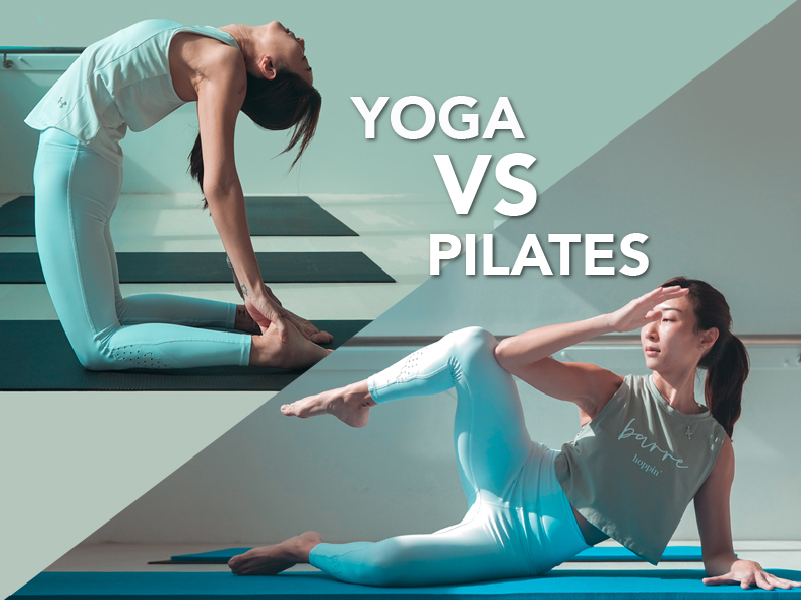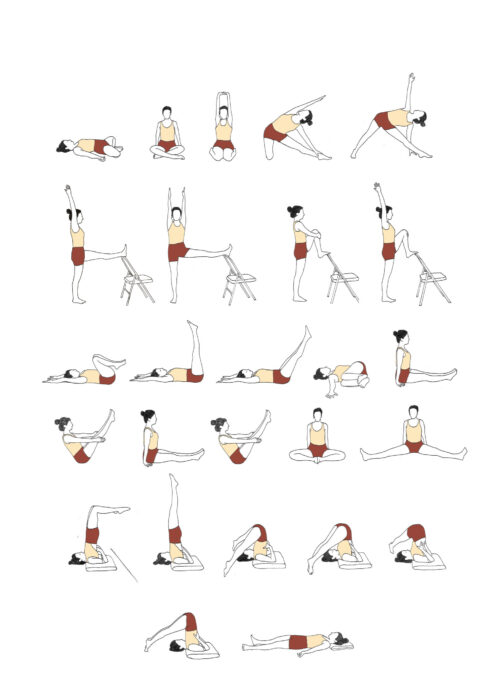
It can be challenging to pick the best yoga pose when you first start a routine. Aim to create a stretch that is both relaxing and strengthening your body. While some poses may be challenging for beginners, there's a few things you can do to get more out of your yoga practice. Listed below are three basic poses that are essential for a beginner's yoga workout. These poses are easy to master and you can then move on to more difficult poses.
One of the best aspects of beginner yoga is the connection with awareness and breath. Being more in touch and present with your breath can make you sleep better, less stressed, and allow you to be more present. This simple guide is sure to make a huge difference in your practice. These are some tips to help you start your beginner's Yoga routine. These are some tips that will help you get going. These tips will help you be ready to take a class once you have mastered them.
Shoulder stand is a great exercise for beginner yogis. It improves the strength and flexibility of your shoulders and is the precursor to more complex poses. It reverses forward-rounded shoulder positions. Begin by pressing down with your hands. Then roll your shoulders back and extend your back. To keep your balance, focus your eyes upwards and your feet on the ground. You'll soon master your first attempts and gain strength.

A plank is another great yoga pose for beginners. This one is a variation of the plank position. You want your elbows to be below your hips. While this may seem challenging at first, it will strengthen your arms and engage your core muscles. In the coming weeks you will be able practice more advanced variations. If you still have questions, schedule a private session with a professional or take part in a workshop.
Many options are available if you're searching for a beginner yoga class. These videos can be found on many YouTube channels. These videos are approximately seven to forty minutes long and provide basic tips. After you have learned the fundamental postures, you are ready to take a 60 minute class. Make sure you find a teacher that is familiar with your body. This will allow you to ensure you do a quality job. The classes were friendly and easy-to-understand.
Beginners should bring a towel, a mat, and a towel to a class of yoga. Props are available at most yoga studios, but you should check online to find the best one. It's possible that you have injuries or are not comfortable with certain poses. If this is the case, it's best for you to speak with a certified yoga instructor. If you're not comfortable with a group setting, private sessions can provide a solid foundation for modifying any pose and avoid injuring yourself.
This type of class should not intimidate beginners. It is not necessary to be afraid. It's easy to learn yoga and reap its benefits. After a few sessions, you will begin to see the changes in your body. It is crucial to follow your instructor's instruction. Make sure to do your research, and get a mat. You'll get the most out your workouts if you have a proper mat.

It is important for beginners to learn as many poses as possible during a day. The best poses will be the ones that are familiar to you and are relatively easy to do. You'll be surprised at how many yoga positions you can learn. Pay attention to your body and modify your poses as needed. If you have a wrist problem or are afraid of getting hurt, it is best to start slow and then work your way up. You'll soon be able practice these poses without difficulty once you have mastered them.
Yoga poses for beginners need not be difficult. Experiment with your poses, and you will find the easiest one to do. You should start with a few simple and easy-to-follow poses, which are accessible to many different types of people. You can also do yoga on the beach or on the beach. You shouldn't attempt more than two poses in either of these situations.
FAQ
How to build muscles quickly
Fast muscle building is possible by eating healthy foods and regularly lifting weights.
The best time to work out is early morning when you are fresh and ready for action!
You should try exercises such as squats, bench presses, push-ups, etc.
You can try different weight training methods and remember to drink lots of water throughout the day.
How many calories should I consume daily?
It varies from one person to another. An average person needs 2000-2500 calories per day. The factors that determine how many calories are needed for you include your gender, age, height, activity level, lifestyle, and gender.
Do weightlifting burn fat faster?
Although weight lifting can help you lose fat more quickly, it is best to combine it with cardio exercises.
Cardio workouts are a great way to increase the weightlifting benefits.
If done correctly, weightlifting can increase your heart rate and oxygen intake which in turn helps you lose weight.
You will not notice any changes in your body composition if you don’t combine it and cardio.
Do I need to exercise every morning?
No! You should do at least 30 mins of moderate-intensity activity 5 days per week. This means that you should be able to walk fast enough to feel slightly out of breath, or bike hard enough to sweat.
What does butter do for men?
Butter is one the most nutritious sources of saturated oils. This type of fat helps to build stronger bones, healthy skin, and hair.
Vitamin K is also found in butter, which helps prevent bleeding from cuts or bruises. Vitamin K is combined with vitamin C to prevent bruises.
Butter is rich in minerals such as calcium, potassium, and phosphorous. These elements promote stronger bones and teeth.
Butter does have some drawbacks. Butter has high cholesterol. Studies show that too much cholesterol can increase your risk of developing heart disease.
Butter is also high in saturated fat which can lead to obesity and higher cholesterol.
Butter can be spread on bread, but you don't have to dip it into soups or salads if you absolutely must. Bread absorbs oil more than pasta or potatoes.
What is the best way lose weight?
It's not easy to lose weight. Many people quit because they don’t know where to start.
You can lose weight by following a few simple steps.
First, ensure that you consume fewer calories per day than you burn. If you eat more calories that you burn, you'll gain weight.
The second is to get regular exercise in order burn those calories. You can choose from a variety of exercises such as walking, biking or dancing.
Third, quit smoking cigarettes and alcohol. These habits make it more likely that you will consume more calories than you would normally.
Fourth, cut down on junk food and fatty foods. You can replace them by healthier choices such as fruits, vegetables or lean meats.
Fifth, you need to change your lifestyle and adopt new habits. For example, you may need to get up early every morning to exercise before work.
Sixth, it is important to be disciplined about your diet and follow it.
Finally, you have the option to join a gym and take part in an aerobics session to burn off those extra calories.
You will quickly notice the difference by following these simple tips.
Is it true, that too much protein can cause kidney stones?
Protein helps maintain healthy bone and tissue. Over-consuming protein can result in calcium being excreted through the kidneys. In turn, this can result in kidney stones.
It is important to remember that not all people get kidney stones from eating more than 2g protein per kilogram (2.2lbs) of body weight. People can eat large amounts of protein and not get kidney stones.
Watching your sodium intake can help prevent kidney stones. Sodium regulates the body's water balance. Too much sodium can lead to kidney stones.
You can also try reducing your protein intake if you get kidney stones. Protein provides about half of the daily caloric needs for most adults. Reduce your intake of protein and you will likely lose weight.
If you do decide to eat more protein, don't go overboard. You should aim to consume less than 20% of your total calories from protein.
Statistics
- Candidates and applicants must pass all four tests at 70% (minimum level) to graduate from Basic Deputy U.S. Marshal (BDUSM) Training. (usmarshals.gov)
- 10 pounds in a month is likely during a lean bulking phase, especially for beginners. (muscleandstrength.com)
- According to the American Heart Association, blood pressure should be checked at least once every two years, beginning at age 20. (my.clevelandclinic.org)
- By John Thompson Take a whopping 38% off a set of PowerBlock Pros. (menshealth.com)
- Cardmembers earn 5% Back at Amazon.com with a Prime Credit Card. (amazon.com)
External Links
How To
How can a man get in shape in 30 days?
It is best to break down difficult goals in small, manageable steps.
This is why you should make sure that you're working toward your goal every day. This could mean anything from doing 10 pushups for 5 minutes to running 3km.
If you do this consistently over time, you will see positive results.
The key thing here is consistency. You have to keep at it until you succeed!
What's the difference between Aerobic Fitness & Anaerobic Fitness, and how can you tell?
Anaerobic fitness means that our bodies can perform intense physical work with no oxygen. Anaerobic pathways are used when there is intense exercise to provide sufficient energy. Anaerobic pathways include glycolysis and creatine phosphate.
Aerobic fitness, however, refers to the continuous practice of low-intensity aerobic exercise. While performing aerobic exercises, oxygen is used as the primary source of fuel for the cells. The aerobic pathway is more efficient than the anaerobic.
To run a marathon you need to first increase your aerobic capacity. If you are only focusing on increasing your anaerobic capabilities, you won't finish the race.
Aerobic fitness is also referred to as cardiovascular fitness. The most common methods for assessing cardiovascular fitness include VO2 max testing or step tests.
VO2 Max Test
VO2max is the maximum oxygen (O2) that your body can use while exercising. This test measures the body's ability to use O2 while exercising.
This test is the best to determine your cardiovascular fitness. However, it requires expensive equipment and highly trained professionals to administer the test.
Step Tests
Step tests can be used to assess cardiovascular fitness. They are easy and effective. These are based on your weight and age, they require you to run or walk on a track.
These tests are simple to perform, cost-effective, and easily accessible from almost any location. For example, you could walk on a treadmill 20 minutes and then stop. Throughout the session, your heart rate should be within a certain range.
This method is known as the "Bruce Protocol". Bruce himself was a runner who developed this protocol after he realized that his heart rate would not increase when he ran longer distances.